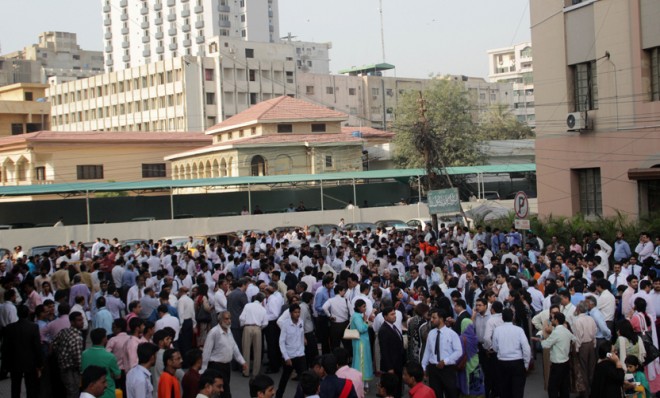Did Pakistan's massive earthquake just create a new island?
Where the land mass came from remains something of a mystery

On Tuesday, after a 7.7-magnitude earthquake rocked western Pakistan, a "crowd of bewildered people" gathered to stare at an island rising 60 feet out of the Arabian Sea, according to Reuters.
Witnesses claim that the mountainous island, located 600 yards off the country's Gwadar coastline, is brand-new.
The earthquake could reportedly be felt in Karachi, hundreds of miles away from its epicenter in Baluchistan, which borders Iran and Afghanistan. So far, 45 people have died as a result of the temblor, with more feared trapped in the rubble.
The Week
Escape your echo chamber. Get the facts behind the news, plus analysis from multiple perspectives.

Sign up for The Week's Free Newsletters
From our morning news briefing to a weekly Good News Newsletter, get the best of The Week delivered directly to your inbox.
From our morning news briefing to a weekly Good News Newsletter, get the best of The Week delivered directly to your inbox.
As rescue workers continue to stream into the area, scientists are trying to figure out what caused the new land mass to appear. It's not rare for a big earthquake to create an island — just not the kind of earthquake that hit Pakistan today.
Islands normally form after thrust earthquakes, like the 9.1-magnitude monster that caused the Indian Ocean tsunami in 2004.
"You have one piece of crust being pushed underneath another piece of crust," explained John Bellini, a geophysicist at the U.S. Geological Survey (USGS). "They lock for awhile, and when the earthquake occurs, the lock is broken, and part of the crust thrusts upwards."
The Indian Ocean earthquake pushed several low-lying areas above the surface of the ocean near the Andaman Islands, although none of them were big enough to warrant a name.
A free daily email with the biggest news stories of the day – and the best features from TheWeek.com
However, the earthquake that hit Baluchistan today "is very different," Bellini said. The fault there is slightly tilted, as opposed to vertical. Called an oblique strike-slip fault, it is similar to the San Andreas fault that runs up California.
"Imagine you had two blocks of wood and you slid them past each other," said Bellini.
As for how it could have created a new island, he said, "I don't know how it would have done that."
Still, the existence of the island was confirmed by Zahid Rafi, principal seismologist for Pakistan's National Seismic Monitoring Center, according to CNN. Officials there are still investigating how the island might have formed and whether it was related to the earthquake.
New islands, overall, aren't a rare phenomenon. Erosion, glacial retreat, and volcanoes create them all the time. One of the latest to make headlines was a 2,000-foot-wide island that popped up off the coast of Yemen in late December 2011 after a volcano erupted under the Red Sea.
Keith Wagstaff is a staff writer at TheWeek.com covering politics and current events. He has previously written for such publications as TIME, Details, VICE, and the Village Voice.

